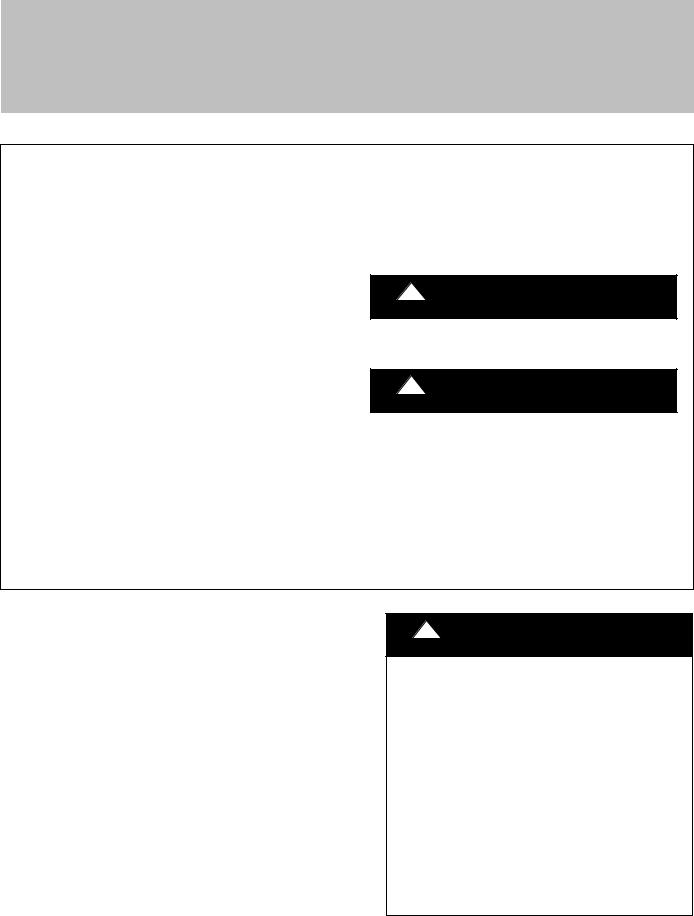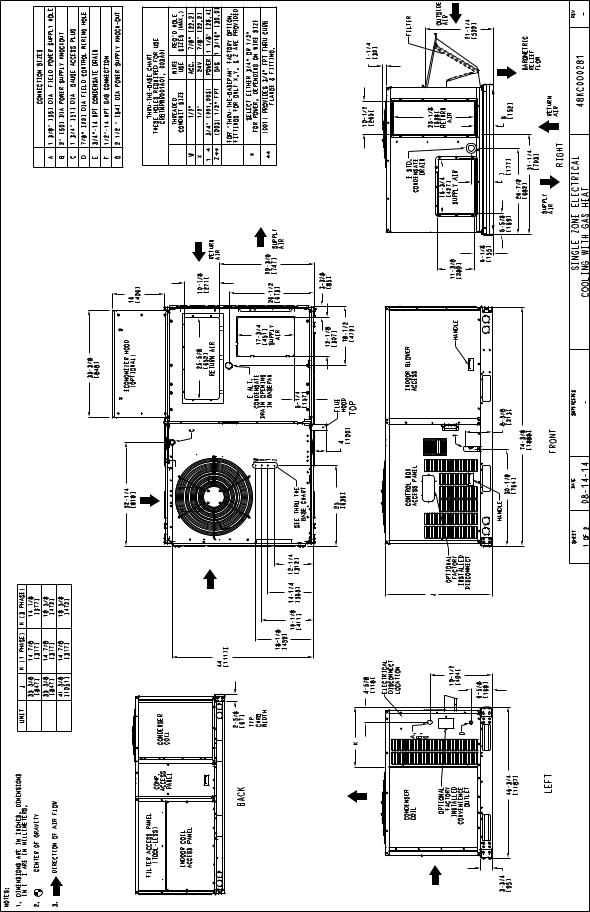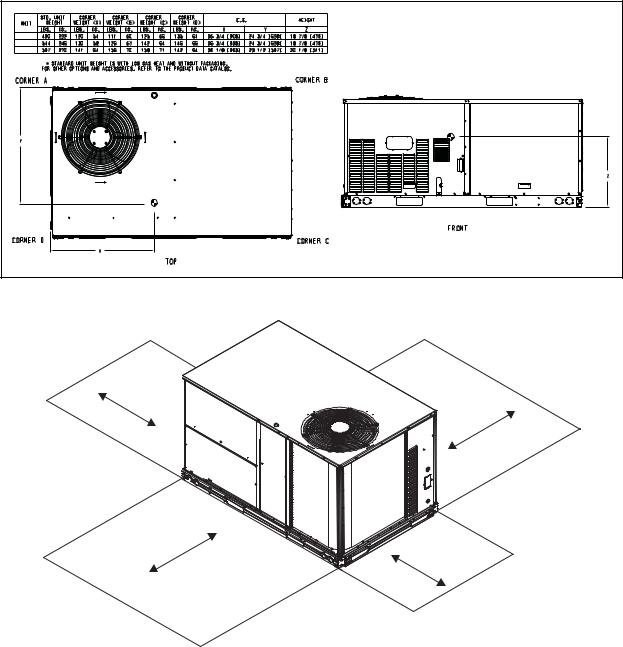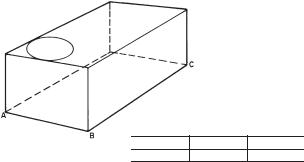International Comfort Products RGX036, RGX048, RGX060 Installation Manual

INSTALLATION INSTRUCTIONS
R−410A Single Package Rooftop Gas/Electric
RGX036−060
These instructions must be read and understood completely before attempting installation
Safety Labeling and Signal Words
DANGER, WARNING, CAUTION, and NOTE
The signal words DANGER, WARNING, CAUTION, and NOTE are used to identify levels of hazard seriousness. The signal word DANGER is only used on product labels to signify an immediate hazard. The signal words WARNING, CAUTION, and NOTE will be used on product labels and throughout this manual and other manual that may apply to the product.
DANGER − Immediate hazards which will result in severe personal injury or death.
WARNING −Hazards or unsafe practices which could result in severe personal injury or death.
CAUTION − Hazards or unsafe practices which may result in minor personal injury or product or property damage.
NOTE − Used to highlight suggestions which will result in enhanced installation, reliability, or operation.
Signal Words in Manuals
The signal word WARNING is used throughout this manual in the following manner:
! WARNING
The signal word CAUTION is used throughout this manual in the following manner:
! CAUTION
Signal Words on Product Labeling
Signal words are used in combination with colors and/or pictures or product labels.
NOTE: Read the entire instruction manual before starting the installation
TABLE OF CONTENTS
SAFETY CONSIDERATIONS . . . . . . . . . . . . . . . . . . . . 2 Rated Indoor Airflow (cfm) . . . . . . . . . . . . . . . . . . . . . 2 INSTALLATION . . . . . . . . . . . . . . . . . . . . . . . . . . . . . . . . 6 Step 1 − Plan for Unit Location . . . . . . . . . . . . . . . . . 6 Step 2 − Plan for Sequence of Unit Installation . . . . 6 Step 3 − Inspect Unit . . . . . . . . . . . . . . . . . . . . . . . . . . 7 Step 4 − Provide Unit Support . . . . . . . . . . . . . . . . . . 7 Step 5 − Field Fabricate Ductwork . . . . . . . . . . . . . . 9 Step 6 − Rig and Place Unit . . . . . . . . . . . . . . . . . . . . 9 Step 7 − Convert to Horizontal & Connect Ductwork 11 Step 8 − Install Outside Air Hood . . . . . . . . . . . . . . . 11
Step 9 − Units with Optional Factory Installed Hinged Panels Only . . . . . . . . . . . . . . . . . . . 12
Step 10 − Install Flue Hood . . . . . . . . . . . . . . . . . . . 13 Step 11 − Install Gas Piping . . . . . . . . . . . . . . . . . . . 13
Step 12 − Install External Condensate Trap
and Line . . . . . . . . . . . . . . . . . . . . . . . . . . . 16 Step 13 − Make Electrical Connections . . . . . . . . . 16 Step 14 − Adjust Factory−Installed Options . . . . . . 23
Step 15 − Install Accessories . . . . . . . . . . . . . . . . . . 23
! WARNING
PERSONAL INJURY, AND/OR PROPERTY DAMAGE HAZARD
Failure to carefully read and follow this warning could result in equipment malfunction, property damage, personal injury and/or death.
Installation or repairs made by unqualified persons could result in equipment malfunction, property damage, personal injury and/or death.
The information contained in this manual is intended for use by a qualified service technician familiar with safety procedures and equipped with proper tools and test instruments.
Installation must conform with local building codes and with the national Electrical Code NFPA70 current edition or Canadian Electrical Code part 1 CSA C.22.1.
509 01 4300 00 |
9/18/14 |

SAFETY CONSIDERATIONS
Improper installation, adjustment, alteration, service, maintenance, or use can cause explosion, fire, electrical shock or other conditions which may cause personal injury or property damage. Consult a qualified installer, service agency, or your distributor or branch for information or assistance. The qualified installer or agency must use factory−authorized kits or accessories when modifying this product. Refer to the individual instructions packaged with the kits or accessories when installing.
Follow all safety codes. Wear safety glasses and work gloves. Use quenching cloths for brazing operations and have a fire extinguisher available. Read these instructions thoroughly and follow all warnings or cautions attached to the unit. Consult local building codes and appropriate national electrical codes (in USA, ANSI/NFPA70, National Electrical Code (NEC); in Canada, CSA C22.1) for special requirements.
It is important to recognize safety information. This is the
safety−alert symbol  . When you see this symbol on the unit and in instructions or manuals, be alert to the potential for personal injury.
. When you see this symbol on the unit and in instructions or manuals, be alert to the potential for personal injury.
Understand the signal words DANGER, WARNING, CAUTION, and NOTE. These words are used with the safety−alert symbol. DANGER identifies the most serious hazards which will result in severe personal injury or death. WARNING signifies hazards which could result in personal injury or death. CAUTION is used to identify unsafe practices, which may result in minor personal injury or product and property damage. NOTE is used to highlight suggestions which will result in enhanced installation, reliability, or operation.
WARNING
FIRE, EXPLOSION HAZARD
Failure to follow this warning could result in personal injury or death.
Disconnect gas piping from unit when leak testing at pressure greater than 0.5 psig (3450 Pa). Pressures greater than 0.5 psig (3450 Pa) will cause gas valve damage resulting in hazardous condition. If gas valve is subjected to pressure greater than 0.5 psig (3450 Pa), it must be replaced before use. When pressure testing field−supplied gas piping at pressures of 0.5 psig (3450 Pa) or less, a unit connected to such piping must be isolated by closing the manual gas valve.
WARNING
ELECTRICAL SHOCK HAZARD
Failure to follow this warning could cause personal injury or death.
Before performing service or maintenance operations on unit, always turn off main power switch to unit and install lock(s) and lockout tag(s). Unit may have more than one power switch.
WARNING
UNIT OPERATION AND SAFETY HAZARD
Failure to follow this warning could cause personal injury, death and/or equipment damage.
R−410A refrigerant systems operate at higher pressures than standard R−22 systems. Do not use R−22 service equipment or components on R−401A refrigerant equipment.
WARNING
PERSONAL INJURY AND ENVIRONMENTAL HAZARD
Failure to follow this warning could cause personal injury or death.
Relieve pressure and recover all refrigerant before system repair or final unit disposal.
Wear safety glasses and gloves when handling refrigerants. Keep torches and other ignition sources away from refrigerants and oils.
CAUTION
CUT HAZARD
Failure to follow this caution may result in personal injury.
Sheet metal parts may have sharp edges or burrs. Use care and wear appropriate protective clothing, safety glasses and gloves when handling parts and servicing air conditioning equipment.
Rated Indoor Airflow (cfm)
This table lists the rated indoor airflow used for the AHRI efficiency rating for the units covered in this document.
Model Number |
Full Load Airflow (cfm) |
|
|
RGX036 |
1050 |
|
|
RGX048 |
1400 |
|
|
RGX060 |
1750 |
|
|
509 01 4300 00 |
Specifications subject to change without notice. |
2 |
|

MODEL NOMENCLATURE
MODEL SERIES |
|
R |
G |
X |
|
0 |
9 |
1 |
|
H |
D |
A |
A |
0 |
A |
A |
A |
Position Number |
|
1 |
2 |
3 |
|
4 |
5 |
6 |
|
7 |
8 |
9 |
10 |
11 |
12 |
13 |
14 |
R = Rooftop |
|
|
|
|
|
|
|
|
|
|
|
|
|
|
|
|
|
|
|
Type |
|
|
|
|
|
|
|
|
|
|
|
|
|
|
|
G = Gas/Electric |
|
|
|
|
|
|
|
|
|
|
|
|
|
|
|
||
|
|
|
|
|
|
|
|
|
|
|
|
|
|
|
|
|
|
X= Standard 14 SEER Efficiency |
|
Efficiency |
|
|
|
|
|
|
|
|
|
|
|
|
|
||
036 = 3 Tons |
|
|
|
|
|
|
|
|
|
|
|
|
|
|
|
|
|
048 = 4 Tons |
|
|
|
|
|
|
|
|
|
|
|
|
|
|
|
|
|
060 = 5 Tons |
|
|
|
|
|
|
|
|
|
|
|
|
|
|
|
|
|
|
|
|
|
Nominal Cooling Capacity |
|
|
|
|
|
|
|
|
|||||
|
|
|
|
|
|
|
|
|
|
|
|
|
|
|
|
|
|
K = 208/230−1−60 |
|
|
|
|
|
|
|
|
|
|
|
|
|
|
|
|
|
H = 208/230−3−60 |
|
|
|
|
|
|
|
|
|
|
|
|
|
|
|
|
|
L = 460−3−60 |
|
|
|
|
|
|
|
|
|
|
|
|
|
|
|
|
|
S = 575−3−60 |
|
|
|
|
|
|
|
Voltage |
|
|
|
|
|
|
|
||
|
|
|
|
|
|
|
|
|
|
|
|
|
|
|
|
|
|
D = Low Heat |
|
|
|
|
|
|
|
|
|
|
|
|
|
|
|
|
|
E = Medium Heat |
|
|
|
|
|
|
|
|
|
|
|
|
|
|
|
|
|
F = High Heat |
|
|
|
|
|
|
|
|
|
|
|
|
|
|
|
|
|
L = Low Heat, Low NOx |
|
|
|
|
|
|
|
|
|
|
|
|
|
|
|
|
|
M = Medium Heat, Low NOx |
|
|
|
|
|
|
|
|
|
|
|
|
|
|
|
|
|
N = High Heat, Low NOx |
|
|
|
|
|
|
|
|
|
|
|
|
|
|
|
|
|
S = Low Heat, Stainless Steel Heat Exchanger |
|
|
|
|
|
|
|
|
|
|
|
|
|
|
|
|
|
R = Medium Heat, Stainless Steel Heat Exchanger |
|
|
|
|
|
|
|
|
|
|
|
|
|
|
|
|
|
T = High Heat, Stainless Steel Heat Exchanger |
|
|
|
|
|
|
|
Heating Capacity |
|
|
|
|
|
|
|||
|
|
|
|
|
|
|
|
|
|
|
|
|
|
|
|
|
|
A = Standard Motor (3 to 5 Ton) |
|
|
|
|
|
|
|
|
|
|
|
|
|
|
|
|
|
B = High Static Motor (3−5 ton, 3 phase models only) |
|
|
|
|
|
|
|
|
|
|
|
|
|
|
|
||
C = Medium Static Motor (3 to 5 Ton) |
|
|
|
|
|
|
|
|
|
|
|
|
|
|
|
|
|
|
|
|
|
|
|
|
|
|
Motor Option (Indoor Fan) |
|
|
|
|
|
|||
|
|
|
|
|
|
|
|
|
|
|
|
|
|
|
|
|
|
A = None |
|
|
|
|
|
|
|
|
|
|
|
|
|
|
|
|
|
B = Economizer w/Bara−relief, OA Temp sensor |
|
|
|
|
|
|
|
|
|
|
|
|
|
|
|
|
|
E = Economizer w/Bara−relief + CO2 Sensor, OA Temp sensor |
|
|
|
|
|
|
|
|
|
|
|
|
|
|
|||
H = Economizer w/Bara−relief, enthalpy sensor |
|
|
|
|
|
|
|
|
|
|
|
|
|
|
|
|
|
L = Economizer w/Bara−relief + CO2 Sensor, enthalpy sensor |
|
|
|
|
|
|
|
|
|
|
|
|
|
|
|||
U = Temp Ultra Low Leak Economizer w/Bara−relief |
|
|
|
|
|
|
|
|
|
|
|
|
|
|
|
||
W = Enthalpy Ultra Low Leak Economizer w/Bara−relief |
|
|
|
|
|
|
|
|
|
|
|
|
|
|
|
||
P = 2−Position damper |
|
|
|
|
|
|
|
Outdoor Air Options / Control 1 |
|
|
|
|
|||||
0A = No Options |
|
|
|
|
|
|
|
|
|
|
|
|
|
|
|
|
|
AT = Non−powered 115v C.O. |
|
|
|
|
|
|
|
|
|
|
|
|
|
|
|
|
|
4B = Non−Fused Disconnect |
|
|
|
|
|
|
|
|
|
|
|
|
|
|
|
|
|
BR = Supply Air Smoke Detector |
|
|
|
|
|
|
|
|
|
|
|
|
|
|
|
|
|
AA = Easy Access Hinged Panels |
|
|
|
|
|
|
|
|
|
|
Factory Installed Options |
|
|
||||
|
|
|
|
|
|
|
|
|
|
|
|
|
|
|
|
|
|
A = Aluminum / Copper Cond & Evap Coil |
|
|
|
|
|
|
|
|
|
|
|
|
|
|
|
|
|
B = Precoat Alum/Copper Cond with Alum / Copper Evap (3 phase only) |
|
|
|
|
|
|
|
|
|
|
|
|
|||||
C = E−Coated Alum/Copper Cond with Alum / Copper Evap (3 phase only) |
|
|
|
|
|
|
|
|
|
|
|
||||||
D = E−Coated Alum / Copper Cond & Evap (3 phase only) |
|
|
|
|
|
|
|
|
|
|
|
|
|
|
|||
E = Copper/Copper Cond & Alum/Copper Evap (3 phase only) |
|
|
|
|
|
|
|
|
|
|
|
|
|||||
F = Copper/Copper Cond & Evap (3 phase only) |
|
|
|
|
|
|
|
|
|
Condenser / Evaporator Coil Configuration |
|
||||||
|
|
|
|
|
|
|
|
|
|
|
|
|
|||||
A = Standard Single Speed Indoor Fan Motor. For W7212 Controls |
|
|
|
|
|
|
|
|
|
|
|
|
|||||
B = Standard Single Speed Indoor Fan Motor. For W7220 Controls |
|
|
|
|
|
|
|
|
|
Motor Type Option |
|||||||
NOTE: Factory installed options are NOT available on single phase models. This includes economizers and 2 position dampers.
1 A combinations of FIOPS are available.
3 |
Specifications subject to change without notice. |
509 01 4300 00 |
|

|
|
5*; |
5*; |
5*; |
5*; |
Fig. 1 − Unit Dimensional Drawing
509 01 4300 00 |
Specifications subject to change without notice. |
4 |
|

5*; |
5*; |
5*; |
Fig. 1 − Unit Dimensional Drawing (cont.)
C
D
B
A
C08337
LOCATION |
DIMENSION |
CONDITION |
|
|
|
|
|
|
48-in (1219 mm) |
Unit disconnect is mounted on panel |
|
A |
18-in (457 mm) |
No disconnect, convenience outlet option |
|
18-in (457) mm |
Recommended service clearance |
||
|
|||
|
12-in (305 mm) |
Minimum clearance |
|
|
|
|
|
|
42-in (1067 mm) |
Surface behind servicer is grounded (e.g., metal, masonry wall) |
|
B |
36-in (914 mm) |
Surface behind servicer is electrically non-conductive (e.g., wood, fiberglass) |
|
|
Special |
Check sources of flue products within 10-ft of unit fresh air intake hood |
|
|
|
|
|
C |
36-in (914 mm) |
Side condensate drain is used |
|
18-in (457 mm) |
Minimum clearance |
||
|
|||
|
|
|
|
|
48-in (1219 mm) |
No flue discharge accessory installed, surface is combustible material |
|
D |
42-in (1067 mm) |
Surface behind servicer is grounded (e.g., metal, masonry wall, another unit) |
|
36-in (914 mm) |
Surface behind servicer is electrically non-conductive (e.g., wood, fiberglass) |
||
|
|||
|
Special |
Check for adjacent units or building fresh air intakes within 10-ft (3 m) of this unit's flue outlet |
NOTE: Unit not designed to have overhead obstruction. Contact Application Engineering for guidance on any application planning overhead obstruction or for vertical clearances.
Fig. 2 − Service Clearance Dimensional Drawing
5 |
Specifications subject to change without notice. |
509 01 4300 00 |
|
INSTALLATION
Jobsite Survey
Complete the following checks before installation.
1.Consult local building codes and the NEC (National Electrical Code) ANSI/NFPA 70 for special installation requirements.
2.Determine unit location (from project plans) or select unit location.
3.Check for possible overhead obstructions which may interfere with unit lifting or rigging.
Step 1 — Plan for Unit Location
Select a location for the unit and its support system (curb or other) that provides for the minimum clearances required for safety. This includes the clearance to combustible surfaces, unit performance and service access below, around and above unit as specified in unit drawings. See Fig. 2.
NOTE: Consider also the effect of adjacent units.
Be sure that unit is installed such that snow will not block the combustion intake or flue outlet.
Unit may be installed directly on wood flooring or on Class A, B, or C roof−covering material when roof curb is used.
Do not install unit in an indoor location. Do not locate air inlets near exhaust vents or other sources of contaminated air. For proper unit operation, adequate combustion and ventilation air must be provided in accordance with Section 5.3 (Air for Combustion and Ventilation) of the National Fuel Gas Code, ANSI Z223.1 (American National Standards Institute) and NFPA (National Fire Protection Association) 54 TIA−−54−−84−−1. In Canada, installation must be in accordance with the CAN1−−B149 installation codes for gas burning appliances.
Although unit is weatherproof, avoid locations that permit water from higher level runoff and overhangs to fall onto the unit.
Locate mechanical draft system flue assembly at least 4 ft (1.2 m) from any opening through which combustion
products could enter the building, and at least 4 ft (1.2 m) from any adjacent building (or per local code). Locate the flue assembly at least 10 ft (3.05 m) from an adjacent unit’s fresh air intake hood if within 3 ft (0.91 m) of same elevation (or per local code). When unit is located adjacent to public walkways, flue assembly must be at least 7 ft (2.1 m) above grade.
Select a unit mounting system that provides adequate height to allow installation of condensate trap per requirements. Refer to Step 11 — Install External Condensate Trap and Line – for required trap dimensions.
Roof Mount —
Check building codes for weight distribution requirements. Unit operating weight is shown in Table 1.
Step 2 — Plan for Sequence of Unit Installation
The support method used for this unit will dictate different sequences for the steps of unit installation. For example, on curb−mounted units, some accessories must be installed on the unit before the unit is placed on the curb. Review the following for recommended sequences for installation steps.
Curb−mounted Installation —
Install curb
Install field−fabricated ductwork inside curb
Install accessory thru−base service connection package (affects curb and unit) (refer to accessory installation instructions for details)
Prepare bottom condensate drain connection to suit planned condensate line routing (refer to Step 11 for details)
Rig and place unit Install outdoor air hood Install flue hood Install gas piping
Install condensate line trap and piping Make electrical connections
Install other accessories
Table 1 – Operating Weights
|
UNITS LB (KG) |
UNITS LB (KG) |
UNITS LB (KG) |
||||
RGX |
|
|
|
|
|
|
|
036 |
048 |
060 |
|||||
|
|||||||
|
|
|
|
|
|
|
|
Base Unit |
490 |
(222) |
544 |
(246) |
597 |
(270) |
|
|
|
|
|
|
|
|
|
Economizer |
|
|
|
|
|
|
|
ÃVertical |
50 |
(23) |
50 |
(23) |
50 |
(23) |
|
ÃHorizontal |
80 |
(36) |
80 |
(36) |
80 |
(36) |
|
|
|
|
|
|
|
|
|
Hot Gas Reheat System |
50 |
(23) |
50 |
(23) |
50 |
(23) |
|
|
|
|
|
|
|
|
|
Cu Fins |
25 |
(11) |
43 |
(20) |
56 |
(25) |
|
|
|
|
|
|
|
|
|
Powered Outlet |
35 |
(16) |
35 |
(16) |
35 |
(16) |
|
|
|
|
|
|
|
|
|
Curb |
|
|
|
|
|
|
|
Ã14-in/356 mm |
115 (52) |
115 (52) |
115 (52) |
||||
Ã24-in/610 mm |
197 (89) |
197 (89) |
197 (89) |
||||
|
|
|
|
|
|
|
|
509 01 4300 00 |
Specifications subject to change without notice. |
6 |
|

Pad−mounted Installation —
Prepare pad and unit supports
Check and tighten the bottom condensate drain connection plug
Rig and place unit
Convert unit to side duct connection arrangement Install field−fabricated ductwork at unit duct openings Install outdoor air hood
Install flue hood Install gas piping
Install condensate line trap and piping Make electrical connections
Install other accessories
Frame−mounted Installation —
Frame−mounted applications generally follow the sequence for a curb installation. Adapt as required to suit specific installation plan.
Step 3 — Inspect Unit
Inspect unit for transportation damage. File any claim with transportation agency.
Confirm before installation of unit that voltage, amperage and circuit protection requirements listed on unit data plate agree with power supply provided.
Step 4 — Provide Unit Support
Roof Curb Mount —
Accessory roof curb details and dimensions are shown in Fig. 4. Assemble and install accessory roof curb in accordance with instructions shipped with the curb.
NOTE: The gasketing of the unit to the roof curb is critical for a watertight seal. Install gasket supplied with the roof curb as shown in Fig. 4. Improperly applied gasket can also result in air leaks and poor unit performance.
Curb should be level. This is necessary for unit drain to function properly. Unit leveling tolerances are shown in Fig. 3. Refer to Accessory Roof Curb Installation Instructions for additional information as required.
MAXIMUM ALLOWABLE
DIFFERENCE IN. (MM)
A-B |
B-C |
A-C |
0.5” (13) |
1.0” (25) |
1.0” (25) |
C06110
Fig. 3 − Unit Leveling Tolerances
Install insulation, cant strips, roofing felt, and counter flashing as shown. Ductwork must be attached to curb and not to the unit. The accessory thru−the−base power and gas connection package must be installed before the unit is set on the roof curb. If field−installed thru−the−roof curb gas connections are desired, use factory−supplied 1/2−in. pipe coupling and gas plate assembly to mount the thru−the−roof curb connection to the roof curb. Gas connections and power connections to the unit must be field installed after the unit is installed on the roof curb.
If electric and control wiring is to be routed through the basepan, attach the accessory thru−the−base service connections to the basepan in accordance with the accessory installation instructions.
Slab Mount (Horizontal Units Only) —
Provide a level concrete slab that extends a minimum of 6 in. (150 mm) beyond unit cabinet. Install a gravel apron in front of condenser coil air inlet to prevent grass and foliage from obstructing airflow.
NOTE: Horizontal units may be installed on a roof curb if required.
Alternate Unit Support
(In Lieu of Curb or Slab Mount) —
A non−combustible sleeper rail can be used in the unit curb support area. If sleeper rails cannot be used, support the long sides of the unit with a minimum of 3 equally spaced 4−in. x 4−in. (102 mm x 102 mm) pads on each side.
7 |
Specifications subject to change without notice. |
509 01 4300 00 |
|
